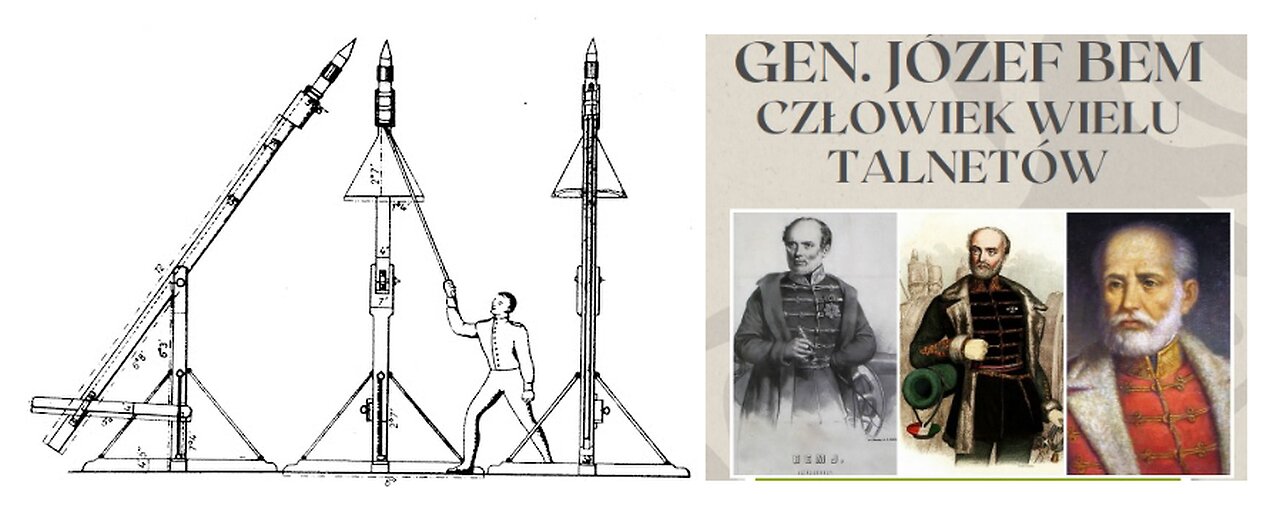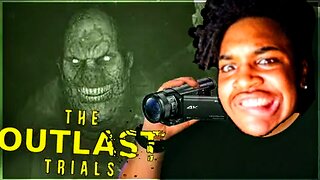Premium Only Content

Polish Genius : Gen. Jozef Bem
In 1819, the captain of the army of the Kingdom of Poland, Józef Bem, published a work on the use of rockets in the army - Notes on incendiary rockets. His next work was Experiments on Congreve's incendiary rockets collected in the Royal Polish Artillery until 1819. He proved in them that building modern rockets was not beyond the capabilities of Polish artillerymen and that they could be used in combat. This resulted in the creation of the 1st Polish Rocket Corps on August 30, 1822. It was headed by a Frenchman, a distinguished officer of the Duchy of Warsaw, General Piotr Bontemps. This unit consisted of a half-battery of mounted rocket launchers and a half-company of foot rocket launchers. Just before the outbreak of the November Uprising, they numbered 150 horse rocket launchers and 126 foot soldiers and had a total of several dozen launchers of three types. The protector of the corps was the commander-in-chief of the army of the Kingdom of Poland, Grand Duke Constantine. Apart from the known flaws, it also had positive features. One of them was the ambition to make the army of the Kingdom of Poland a model, also in technical terms, for the whole of Europe. Therefore, he took special care of the training, equipment and selection of candidates for rocket launchers. The corps was a semi-experimental unit, which is why it included a large number of craftsmen: locksmiths, carpenters, carpenters, etc. Their task was to prepare and repair special equipment, including launchers. Rockets were manufactured in the arsenal's workshops. The rocketeers were subject to special protection, almost secrecy - during their exercises, the training ground at Powązki was surrounded in advance by the gendarmerie. The launchers were tightly covered with special covers while on the move. The stationing of rocket launchers in a small, provincial town like Warka also served to maintain secrecy. In the autumn of 1823, during the great Polish-Russian maneuvers held near Brest, the defeated B Corps covered its retreat with a spectacular salvo of several dozen rockets. Unfortunately, some of them caused confusion and panic among their own troops and... among the invited guests. However, this did not stop the development of the corps. Equipment and training were constantly improved, which was facilitated by annual stays at the Powązki summer camp.
After the outbreak of the November Uprising, the Rocket Corps was incorporated into the active army. At the same time, the horse half-battery was liquidated and rearmed with guns. Its equipment was received by a significantly enlarged infantry company. The rocketeers operated in such an organization until the end of the war. Although the rockets were still treated with disbelief, they were used in combat several times. On February 25, 1831, during the Battle of Grochów, a massive rocket salvo contributed significantly to the collapse of the Russian cavalry charge against the weakened insurgent positions. The next day, Prague, abandoned by Polish troops, was burned by flares. The foot company also took part in other battles, such as Wawer. As a rule, however, she remained in reserve. Its last fight was the defense of Warsaw in September 1831. From the fortifications of the capital, it fired at Russian columns forming for the assault, artillery positions and siege works. The advantage of the rockets was that they were easy to launch from lightweight launchers that did not require much maintenance. This allowed to significantly reduce the number of horses in the battery. Moreover, the rockets retained a similar ability to hit the target throughout the entire flight length, unlike barrel artillery shells. What is more important, the range was similar: for 4-inch rockets it was 2,348 m, and for the half-powder one-horn - 2,082 m. The disadvantages include poor accuracy of the rockets (sensitivity to wind and humidity, structure and shape of the propellant), and their three times higher price in compared to artillery ammunition and time-consuming production. Rocket explosions on the launchers or on the way to the target often occurred. These features meant that the rockets could provide great services in specific conditions. They were useful in places difficult to access for guns or when it was necessary to quickly open the strongest possible fire. They were very useful when striking large targets, such as dense buildings or large troop groups. Launchers.
Several types of launchers (called rocket launchers) were used to launch rockets. The first type, somewhat resembling a cart, was mounted on wheels and allowed three rockets to be fired simultaneously. It also carried rockets and two types of portable launchers placed in special boxes. One of them, three-legged, was about 1 m high and allowed for firing from hard-to-reach places: steep hills, roofs and towers. Rocket launchers had at their disposal tiny (only 15-centimeter) iron trestles used for spot shooting just above the ground.
Ammunition and spare equipment were transported in 8 rocket vehicles.
In total, the horse half-battery included 5 wheeled beds, 9 three-legged beds and 14 five-legged iron beds. This allowed (theoretically) to fire a single salvo of 38 rockets. Rockets.
Józef Bem developed several types of rockets, which were then introduced into service. These were flares of 2.5- and 4-inch caliber, no different in terms of construction. Each type had a similar type of warhead. Heads used:
- incendiary (called carcass) - it was conical with nine holes through which the flame of the incendiary mixture escaped. It was used to start fires in buildings and any flammable materials. Incendiary rockets were usually fired at high speed, hitting the objects being fired from above. These rockets ignited building fires all the more effectively because roofs were then commonly covered with straw thatch or wooden shingles, and wood was used as a building material,
- explosive - in the form of a spherical grenade mounted on the top of the body. For the smaller caliber rocket 6 pounds, for the larger one 8 pounds. The warhead charge was ignited through a hole in the bottom of the combustion chamber. It acted with the force of impact and then explosion. Hitting a dense column with such a grenade resulted in many casualties. Explosive rockets were fired in bursts - almost flat above the ground - so they could hit targets along the entire flight route,
- in the shape of a cone or ball. It was used against infantry, cavalry and light fortifications. However, the effectiveness of these rockets was low, as they acted only through the kinetic energy of the impact,
- grapeshot projectiles were also used. Smoke and illuminating charges were used for signaling.
-
 2:27:12
2:27:12
Nerdrotic
8 hours ago $30.04 earnedCIA JFK Assassination Documents | Forbidden Frontier 097
80.3K29 -
 4:02:43
4:02:43
Alex Zedra
5 hours agoLIVE! Verdansk all night <3
31.3K11 -
 1:22:13
1:22:13
Sarah Westall
8 hours agoTruth about Gila Monster Snake Venom & the Miracle of Peptides for Human Health w/ Dr. Diane Kazer
75.5K19 -
 2:18:43
2:18:43
Tundra Tactical
6 hours ago $3.89 earned$3200 ZEV HEARTBREAKER Contest!!!
38.5K1 -
 LIVE
LIVE
EuphioniaStudio
5 hours ago $3.83 earnedIt's BAAAASED, MARIO! | Mario Party 4
540 watching -
 2:48:34
2:48:34
Adam Does Movies
15 hours ago $6.11 earnedAll The Big Movie Announcements From CinemaCon 2025- LIVE!
52.8K -
 1:07:30
1:07:30
Josh Pate's College Football Show
8 hours ago $4.97 earnedBig CFB Changes Coming | USC + Texas + Alabama In 2025 | Truth About Officiating | I Am Engaged
50.2K1 -
 4:43:40
4:43:40
Biscotti-B23
11 hours ago $2.38 earned🔴 LIVE VIEWERS VS MEMBERS BEEF 🔥 FINDING A NEW MAIN ⚔ BLEACH REBIRTH OF SOULS
42.6K2 -
 3:21:55
3:21:55
DTDUBtv
8 hours agoOUTLAST TRIALS WITH SARAHSLOTH17
35.7K1 -
 LIVE
LIVE
Major League Fishing
5 days agoLIVE! - MLF Bass Pro Tour: REDCREST - Day 4
4,906 watching